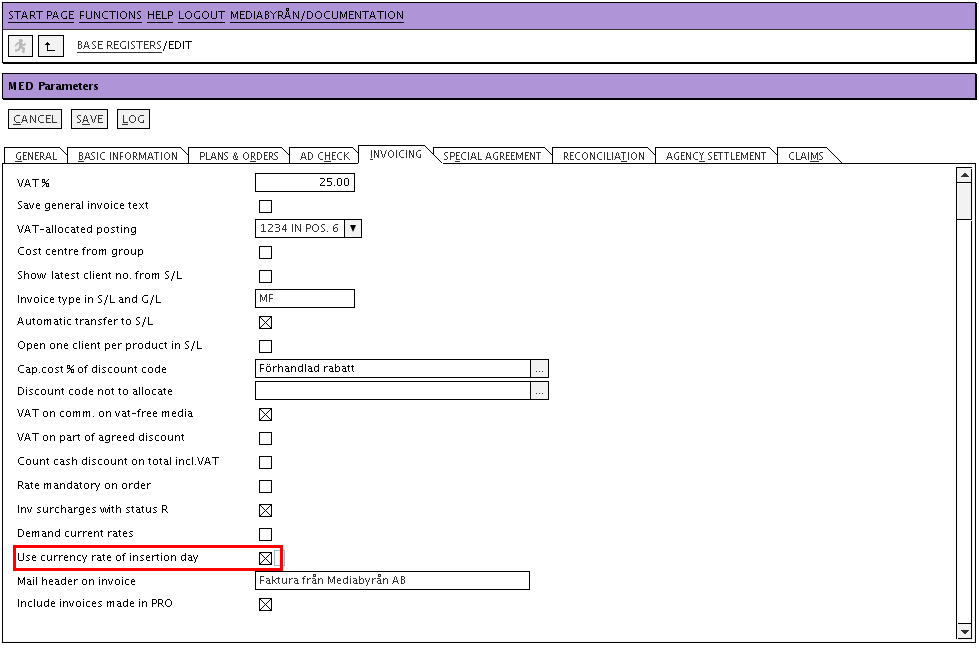News:Easier to separate currency – and media discrepancies
| Published | 2011-12-19 |
|---|---|
| Module | Media |
| Version | unknown |
| Revision | 19628 |
| Case number | 539881 |
| News link | 697 |
If you use the same currency rate when you print a client’s invoice and when you enter media invoices, you should not have any currency discrepancies when entering media invoices. The rate used is the invoicing rate on the order, if there is any. If not, use the insertion date’s currency rate. If the insertion date is a future date, use the last available rate. When you fetch invoicing currency from the currency registers, it is automatically entered in the invoicing currency field to ensure that teh next client-/media invoice gets the same rate.
- New parameter in Base register/MED/Parameters/Invoicing: “Use currency rate of insertion day”
- If the parameter in pt. 1 is ticked and the order has no invoicing currency rate, the rate from the insertion date is used in printout of the invoice. if there is no currency rate on the insertion date, the closest previous one is used. The rate is written to the order.
- The following is valid even if the parameter in pt. 1 is ticked:
- If the general info tab of the order has no invoicing currency , use insertion day rate when entering media invoice. If there is no insertion date rate, use the closest previous one. - If the order’s general info tab has an invoicing rate, it shall be used when entering media invoices. - In both cases the same mark-up is made than when invoicing the client (according to client agreement).
- Rate discrepancies that in spite of this are booked on media invoices are proportionally distributed to the insertions included in the invoice, where they are marked with the accurate dimensions.
